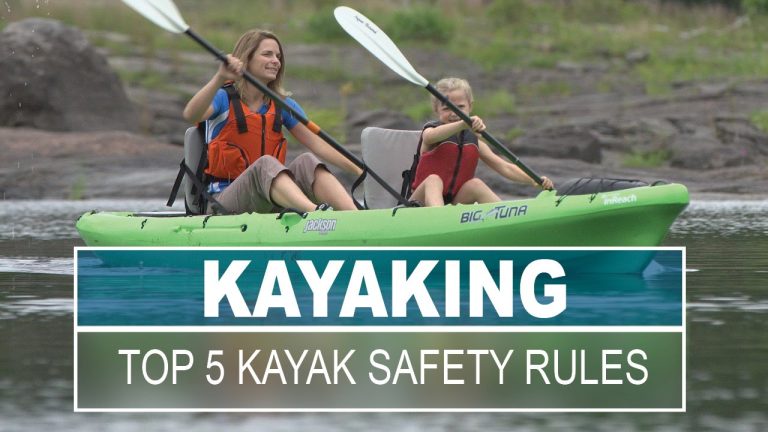Choosing the Best Inflatable Kayak
Selecting the best inflatable kayak is the first step toward a safe paddling adventure. Look for kayaks that are made from durable materials such as PVC or Hypalon, which offer resistance to punctures and abrasions. Ensure the kayak has multiple air chambers; this feature ensures that even if one chamber deflates, the kayak remains buoyant. Additionally, check for a high weight capacity and stability, especially if you plan to paddle in open water or with a partner.
Pre-Trip Inspection
Before heading out, thoroughly inspect your inflatable kayak. Check for any signs of wear and tear, such as leaks, punctures, or weakened seams. Inflate the kayak fully and leave it for a few minutes to ensure it holds air without any issues. Examine the paddles, life jackets, and other equipment for any damage. Carry a repair kit specifically designed for inflatable kayaks, including patches and adhesive.
Proper Inflation Techniques
Proper inflation is critical for maintaining the kayak’s performance and safety. Refer to the manufacturer’s guidelines for the recommended air pressure. Use a pressure gauge to avoid overinflation, which can stress the seams and material. Conversely, underinflation can compromise the kayak’s stability and maneuverability. Inflate each chamber evenly and ensure the valves are securely closed.
Wearing a Personal Flotation Device (PFD)
A Personal Flotation Device (PFD) is a non-negotiable safety item. Regardless of your swimming skills, always wear a properly fitted PFD while kayaking. Ensure the PFD is U.S. Coast Guard-approved and suitable for your weight and the type of water you’ll be paddling in. A good PFD provides buoyancy and can be a lifesaver in case of an emergency.
Understanding Water Conditions
Before setting out, research the water conditions of your chosen location. Check the weather forecast, water temperature, and any potential hazards such as strong currents, tides, or underwater obstacles. Avoid kayaking in extreme weather conditions, such as high winds, heavy rain, or thunderstorms. Calm, clear days are ideal for a safe paddling experience.
Learning Basic Paddling Techniques
Understanding basic paddling techniques enhances control and safety on the water. Learn how to perform forward strokes, backstrokes, and turns efficiently. Practice techniques like the sweep stroke for turning and the draw stroke for moving sideways. Additionally, know how to perform an emergency stop and how to brace to prevent capsizing.
Emergency Preparedness
Prepare for emergencies by carrying essential safety gear. This includes a whistle for signaling, a first aid kit, a bilge pump or sponge for removing water from the kayak, and a waterproof bag to keep your belongings dry. It’s also wise to bring a communication device like a waterproof phone case or a marine radio, especially if you’re paddling in remote areas.
Kayaking with a Buddy
Paddling with a companion enhances safety and makes the experience more enjoyable. In case of an accident or emergency, having someone else present can provide immediate assistance. If you prefer solo kayaking, inform someone about your plans, including your route and expected return time.
Proper Re-Entry Techniques
If you fall out of your kayak, knowing how to re-enter it is crucial. Practice re-entry techniques in a safe, controlled environment before venturing out. Methods like the paddle float re-entry or the cowboy scramble can be lifesaving. Familiarize yourself with these techniques to ensure you can get back into your kayak quickly and safely.
Respecting Wildlife and the Environment
When kayaking, respect the local wildlife and environment. Maintain a safe distance from animals to avoid disturbing their natural behavior. Dispose of trash properly and avoid littering. Follow the Leave No Trace principles to preserve the beauty and integrity of natural water bodies for future generations.
Conclusion
Kayaking is a thrilling and rewarding activity, but safety should always be a top priority. By selecting the best inflatable kayak, conducting thorough inspections, wearing a PFD, understanding water conditions, mastering paddling techniques, preparing for emergencies, kayaking with a buddy, practicing re-entry techniques, and respecting the environment, you can ensure a safe and enjoyable paddling experience. With these tips in mind, you’ll be well-equipped to explore the waters with confidence and peace of mind.






